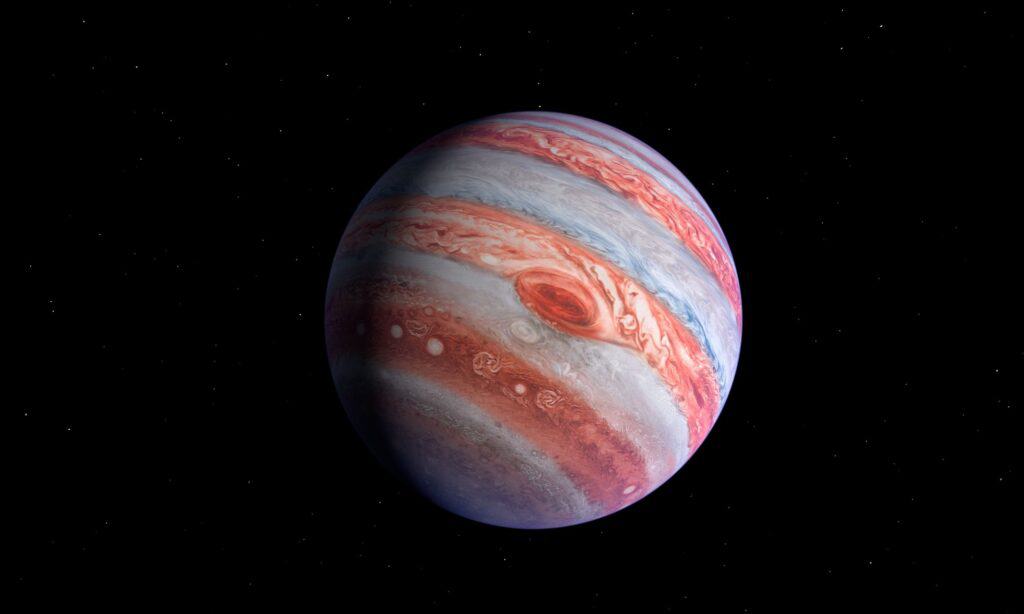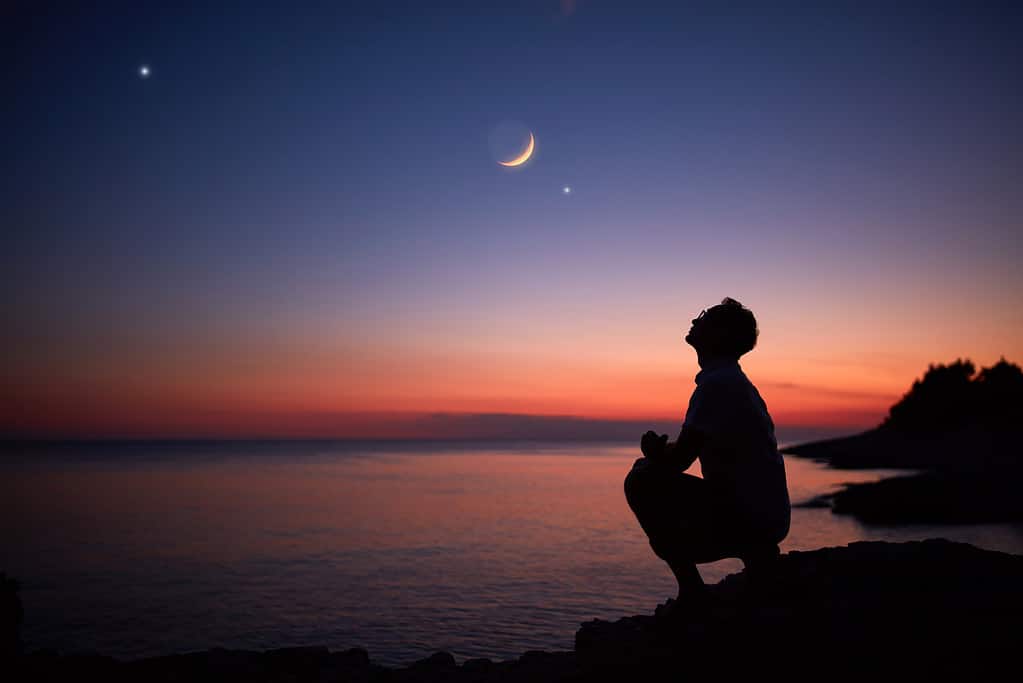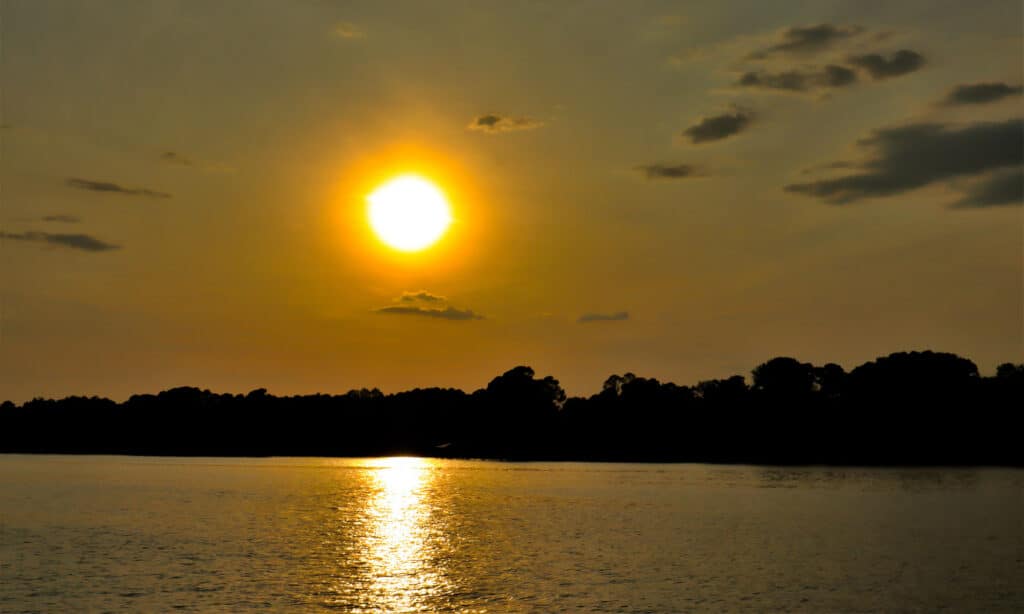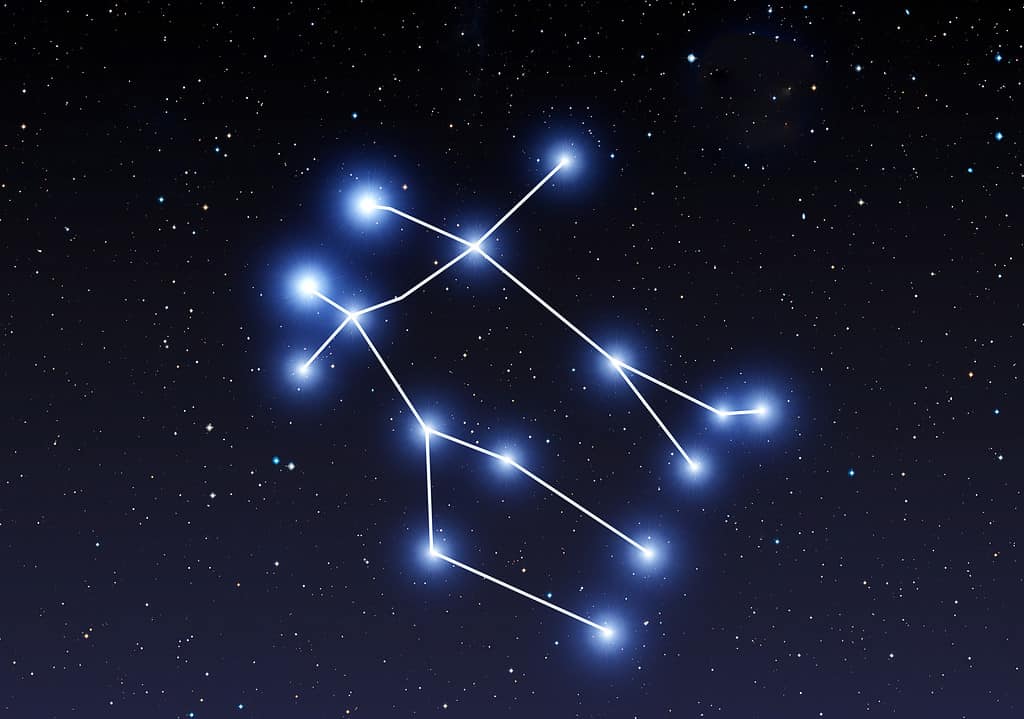Jupiter is the biggest planet in the solar system, and it’s also the second brightest planet in Earth’s night sky. Because of this, it’s a popular celestial body to track from Earth. Let’s discover when Jupiter will be closest to Earth (2024 edition).
When Will Jupiter Be Closest to Earth in 2024?

Jupiter will be closest to Earth on the night of December 7, 2024.
©joshimerbin/Shutterstock.com
Jupiter will be closest to Earth on the night of December 7 in 2024. It will be just under 370 million miles or 33.11 light minutes away from our planet on this night. This also means that Jupiter will be about 462 million miles away from the sun.
A light minute refers to the distance that light moves in a vacuum in 60 seconds. Space is essentially a vacuum, so this calculation is used to define how fast light moves in outer space. Light moves approximately 11.16 million miles in a minute.
Neither Jupiter nor Earth orbits the sun in a perfect circle. Their orbits are elliptical, or more like an oval than a circle. There are points during their orbits when they’re closest and farthest from each other, and due to their elliptical orbits, these moments of separation are variable and not at the same time every year.
Why Can We See Jupiter With Our Bare Eyes From Earth?

Sunlight is reflected by Jupiter’s atmosphere which makes it visible in the Earth’s sky.
©m-gucci/iStock via Getty Images
Jupiter is visible to the naked eye from Earth’s surface because it reflects enough of the sun’s light out into space. It is the fourth brightest body in the sky after the sun, the moon, and Venus.
The atmosphere of Jupiter is exceptionally good at reflecting light because there is a lot of liquid suspended in the atmosphere. Liquid droplets in atmospheres act like little prisms which means they send light that hits them in many directions.
These droplets in Jupiter’s atmosphere form clouds like those on Earth, and like Earth’s clouds, they reflect light and make the planet very visible. Jupiter’s clouds are made of ammonium hydrosulfide, ammonia, and water.
Jupiter is also massive and contains more mass than all of the other planets in the solar system combined. This means that it has a massive amount of reflective atmosphere when compared to other objects in our solar system. Because of this, it appears bright on Earth.
Venus is brighter to the naked eye than Jupiter but that isn’t because it’s so much closer. Venus’s atmosphere is dominated by a dense atmosphere made of sulfuric acid and carbon dioxide that reflects an incredible amount of sunlight. These clouds are so thick that if it were possible, you could swim in them like you do on surface water on Earth.
The planet Jupiter is always brighter in the sky than Sirius. Sirius is the brightest star in the night sky, but the light that Sirius produces travels much farther than the sunlight reflected by Jupiter’s atmosphere. This means that Jupiter is much brighter than the star Sirius even though Sirius independently creates its light.
When Will Jupiter Be In Opposition in 2024?

Jupiter will be in opposition to Earth in 2024 on December 7, 2024.
©iStock.com/Ed Williams
Jupiter will be in opposition to Earth in 2024 on December 7. When a planet is in opposition, it is in the exact opposite place in Earth’s sky than the sun. When Jupiter is in opposition, this means that Jupiter will rise in exactly the opposite spot in the sky from where the sun went down. At this time, Jupiter is also the biggest and brightest in appearance out of any other time of the year.
Where in the Sky is Jupiter in November of 2024?
Jupiter will be visible roughly 2 hours after sunset about 20° high to the far upper right of the Pleiades star cluster in November of 2024. The planet is also at its brightest on January 18, 2024.
The constellation of Taurus will play host to Jupiter in November 2024. Jupiter will start 2024 in Aries, and then spend the rest of the year in Taurus.
How Often is Jupiter in Opposition with the Sun?
Jupiter is in opposition to the Earth about every 13 months. While Earth makes it around the sun in one year, Jupiter takes about 12 years to make it once around the sun. On the day of the opposition, Jupiter rises in the east exactly as the sun is setting.
Because Earth orbits the sun much faster than Jupiter, Earth passes by Jupiter at different points along both planetary orbits at a rate that does not coincide with an Earth year. This is why this planetary opposition happens at different times depending on the year.
When Does Jupiter Go Retrograde in 2024?
Jupiter goes retrograde on October 9, 2024. Its retrograde ends on February 4, 2025.
Retrograde means that Jupiter appears to stop in Earth’s sky and travel backward. It starts moving from east to west as it goes into retrograde on October 9 When in proper motion, it moves from west to east. It will return to its proper motion as its retrograde ends on February 4, 2025.
Is There a Meteor Shower in 2024?

The Geminids Meteor Shower runs from December 7 to 17, 2024.
©iStock.com/PaulPaladin
Yes, there will be a few meteor showers before 2024 is over. There have also been a few since the beginning of the year. The largest meteor shower left this year will be on the night of December 13 and 14, 2024.
This large shower is called the Geminids Meteor Shower. On its peak night, there may be over 120 meteors per hour. The shower runs from December 7 to 17, with its peak being the night of December 13 and 14.
Since the new moon is on December 12, this year’s shower should be highly visible if the skies are clear. If you want to see the height of the show, center your gaze near the constellation of Gemini after midnight. However, meteors can appear anywhere in the sky at any time after dark.
Thank you for reading! Have some feedback for us? Contact the AZ Animals editorial team.








